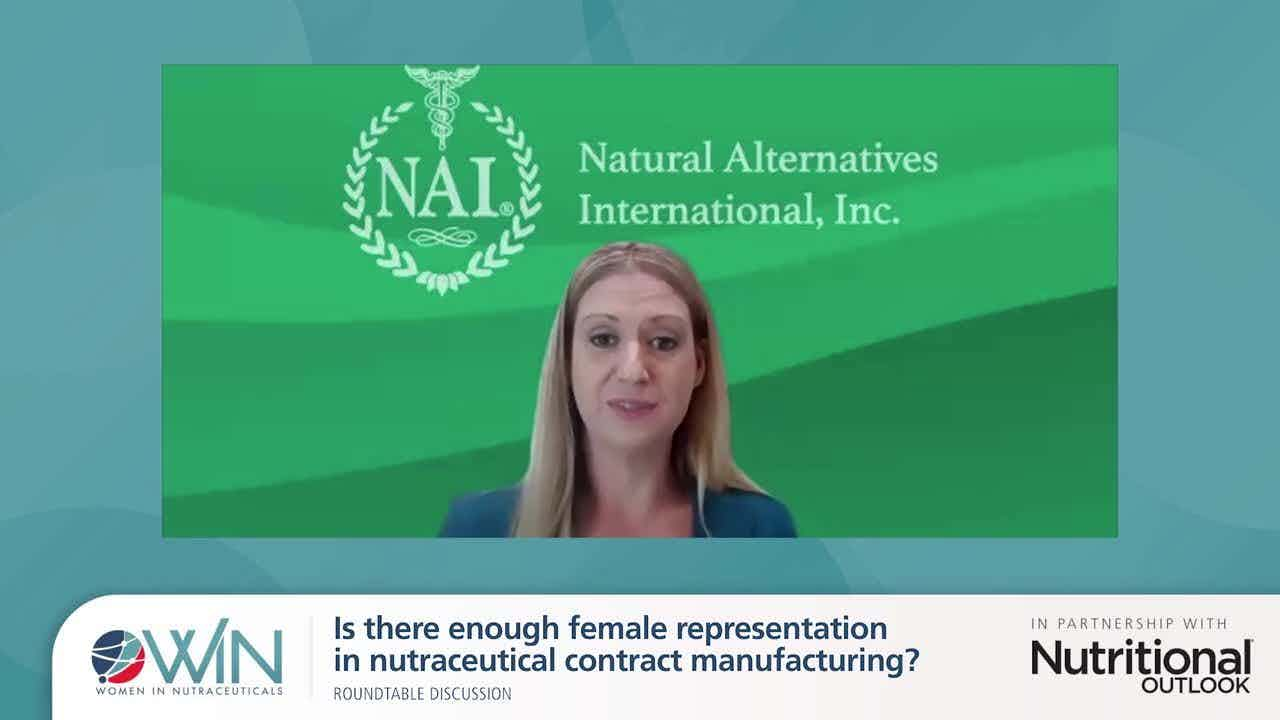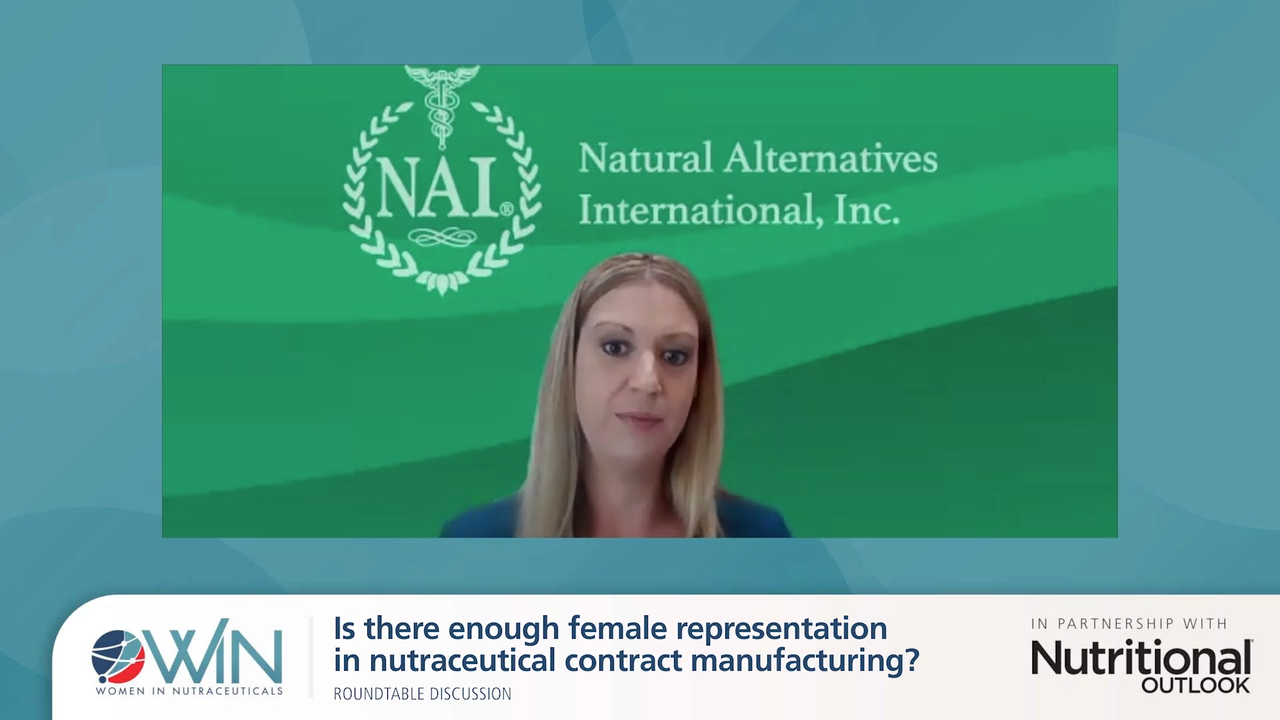Omega-3 Research for Women, by Women
Women-led omega-3 research advances wellness for all women’s life stages.
Image | adobe.stock/igorfrost

If you attend omega-3 scientific symposia or industry conferences, two themes stand out. First, a lot of recent omega-3 research findings especially impact women’s health and wellness — fertility, pregnancy and fetal brain development, gestation, hormonal balance and menstruation, sexual and reproductive health, gut-brain axis signaling, inflammaging, etc. Second, women lead much of the cutting-edge omega-3 research and nutritional recommendations—but not just recently!
Women In Nutraceuticals (WIN) reported1 in 2024 that the natural products industry is composed only of 1/3 female senior managers and just over 1/4 of women-led companies. Yet one of the fastest-growing nutraceutical market sectors is for products focused on women’s health and wellness goals at various life stages. In 2023, Nutrition Insight found2 the market for supplements with women’s claims growing at 40% annually.
The demand for evidence-based research and innovation in this women-empowered market has a long way to run, and for good reason. Women’s health and wellness support needs are different than men’s. Yet natural life-stages like pregnancy (and related fertility support) and menopause are often disqualifying conditions in dietary intervention trials. The need remains for insightful research and nutraceutical innovation meeting women’s life course wellness goals.
As noted UK author and nutritionist Pauline Cox MSc observes, “Investment in female-specific research acknowledges that the ‘male default model’ cannot be accurately used for both genders, that women have the right to research that reflects the complexities and differences that exist between male biology and female biology. It is through better female-specific research that the millions of women whose health concerns have been misdiagnosed or ignored can have their needs understood and met. Emerging research provides insight into the differences in male and female biology, pain pathways, hormonal systems, our risk of different health conditions and how our biology and hormones influence this.”
This difference is certainly true in omega-3 lipid metabolism, where women and especially pregnant women are known to metabolize omega-3 precursor lipids more efficiently than men, and who during pregnancy require greater omega-3 DHA to build their child’s brain and help prevent early- or pre-term birth.
Brands like Ritual, FullWell, MegaFood, TrueGrace, Daily Nouri, Bond.Life, and Levelle understand this. They offer a range of women’s need-based and life-stage centered products supported by omega-3 research. Not surprisingly, many of these and other companies are founded by women.
The essential role that omega-3 sources play in modulating or benefiting many physiological systems is widely recognized. In many cases these effects occur differently in women than in men, leading to different dietary intake recommendations at different life stages. Omega-3 research led by women has actively contributed to understanding how these effects translate to different life-stage outcomes for women and also how omega-3 status improvements can be achieved more sustainably.
Some of the early pioneers in omega-3 research were women, notably Mildred Burr who co-discovered3 the biological essentiality of omega-6 linoleic acid (1929) and omega-3 alpha-linolenic acid (1932), relating notably to skin health and the estrus cycle and fertility4 in rats. Others who are still active in omega-3 research have careers going back nearly 50 years. What started as a trickle has become a flood of exciting research from laboratories led by women and/or carried out by women.
Omega-3 Pioneers Improving Pregnancy and Early Childhood Development
Canadian Professor Sheila Innis (d. 2016) is credited with discovering that dietary fats dynamically alter cell membrane composition and, hence, membrane function. Her early work in the 1970’s and 80’s is credited with demonstrating the profound importance of dietary omega-3 fatty acid intakes for maternal health, fatty acid quality in breast milk, and infant neurocognitive development—and for changing related dietary guidelines and policy around the world.
Professor Susan Carlson at Kansas University Medical Center has led research for more than 25 years establishing through larger-scale randomized controlled trials (RCTs) the pivotal role of omega-3 DHA in life stages of pregnancy and infancy. Her work led to the widespread inclusion of DHA in infant formula starting in 2002. And she confirmed5 in 2022, “It is now clear that pregnancy and infancy are times in life when DHA is conditionally essential. We know that because studies that provide additional DHA during both pregnancy and infancy have shown a variety of benefits. The most studied outcomes are preterm birth and infant visual acuity and cognitive development.”
In parallel work from Australia led by Professor Maria Makrides, her team established the biological necessity of making up for the lack of DHA from placental transfer in early pre-term infants (<34 weeks) who miss much of the last trimester in utero, when the neonatal brain is developing so rapidly. Her findings have contributed to omega-3 precursor ALA and preformed DHA reformulations of infant formula and parenteral (IV emulsion) feeding and related specifications in 180 countries. These changes have helped assure better neurocognitive and visual development benefits for millions of children born prematurely.
Dr. Christina Valentine, MD is a physician, dietitian and neonatologist who has also dedicated a 25+ year career bridging industry engagements (Mead Johnson, RB, Kate Farms) and hospital neonatal intensive care units (University of Arizona, Cincinnati Children’s Hospital). Her work has improved pregnancy, immune response, and neonatal health outcomes from omega-3 DHA fortification in dietary, enteral (tube fed), and parenteral (IV emulsion) applications. Her work has yielded considerable success in improving maternal gestation, avoiding pregnancy complications, and raising quality of life for pre-term infants.
Dr. Emily Oken, MD whose 25+ year career at Harvard University spans clinical practice, epidemiology, and longitudinal studies, has followed life course wellness outcomes in mothers and early childhood since 2000 (Project Viva). Her research has focused on the health effects of improved omega-3 nutrition, including from fish consumption, while understanding effects of environmental toxicants on health and disease, studying the balance of risks/benefits during pregnancy and child development. This work includes the long-term health effects of breastfeeding for both mother and child. She has observed,6 “It’s not just the behaviors that you do as an adult… that influence your risk for chronic disease, but even behaviors that happen very early in life, or prenatally.”
Women-Led Inflammation and Hormonal Balance Research
Dr. Oken’s view provides a nice bridge from the societally crucial role of omega-3’s in pregnancy, peri-partum, and early childhood life stages onto the headland of women’s life-stage wellness needs rooted in omega-3 modulated inflammation response and hormonal balance — a field bristling with new discoveries.
Professor Sophie Layé and her team at the University of Bordeaux aim7 “to decipher the effect of nutrition on cognitive decline and mood disorders, to define a protective nutrition for the brain.” She leads the international Food4BrainHealth research consortium whose work is progressively uncovering how omega-3 lipids and their metabolites contribute to neuroplasticity and protect against neuroinflammation, including sex-based differences in the onset of dementia and Alzheimer’s disease, which disproportionately affects women.
Across the Channel, in Wales, Professor Valerie O’Donnellleads research at Cardiff University focused8 on understanding “the role of new lipids in vascular inflammation, including abdominal aortic aneurysm, cardiovascular disease, dementia and wound healing.” A lipidomics research specialist, Dr. O’Donnell leads efforts to build the global LIPID MAPS9 database resource which helps lipid researchers around the world identify and analyze lipids that modulate everything from blood clotting, fighting infection, and wound healing to inflammation response and oxylipin regulation.
Up the road at the University of Manchester, Professor Anna Nicolaou’s laboratory is focused10 on molecular mechanisms mediating the role of omega-3 metabolites in skin and reproductive system inflammation, cancer, immunity, cellular crosstalk, and tissue responses.
Finally, American Professor Penny Kris-Etherton’s nutritional research on lipids at Penn State since the 1970’s has made major contributions to the field of cardiovascular disease prevention with omega-3 lipids. Her work in creating guidelines for the use of omega-3s in clinical practice has had major impacts around the world.
These established principal investigators and their collaborating research teams around the world exemplify the breadth of work around omega-3s in all life stages. From the discovery of the underlying cellular signaling mechanisms and metabolites derived from omega-3 lipids to changing clinical practice guidelines, these women have helped improve the health and lives of women (and their children) all over the world.
Their efforts, in turn, are supported by a rising tide of newer female researchers whose award-winning research is discovering distinct anti-inflammatory activity, metabolites, and pathways affecting women’s cardiovascular health, gut wellness, hormonal balance, and sex-differences in LC-PUFA synthesis. Some are showing how plant-based omega-3 precursors ALA and SDA can work alongside conventional preformed EPA and DHA sources, eliciting different and/or complementary responses, while contributing to greater overall sustainability in meeting recommended omega-3 intakes globally. All are reinforcing both the essentiality of omega-3 lipids in the diet and the importance of more closely balancing omega-3 and omega-6 fatty acid intakes to pre-industrial levels.
This newer cadre advancing omega-3 research impacting women’s life course health includes: Dr. Shivtia Trop-Steinberg11 (fertility, hormonal balance), Dr. Kristina Jackson12 (maternal and infant health, novel fatty acid biomarkers), Dr. Eliana Lucchinetti13 (gut barrier integrity, insulin signaling), Dr. Charlene Roussel14 (gut-mediated endocannabinoidome and SCFA effects), Dr. Helena Fisk15 (oxylipin crosstalk in organ systems, inflammaging and obesity), Dr. Ella Baker16 (novel lipids affecting cell membranes, immune function), and Ruxandra Rotarescu MSc17 (whole body EPA/DHA bio-synthesis and inhibition). Each of these women has made important new contributions impacting the future of women-centered research and future innovation in nutraceutical products tailored to women’s life stage needs.
In 2025, with a quarter of the 21st century now in the past, it’s an exciting new era in omega-3 research. The wider natural products industry and the supportive research communities can look to these leading women omega-3 researchers for learnings, guidance, and inspiration. It all leads toward the omega-3 community helping the natural products industry achieve WIN’s strategic goal of greater gender parity in all phases of research, innovation, product development, and meeting women’s health needs.
References
- Grebow, J. Nutraceutical industry’s lack of female leaders is on par with similar industries, reveals first benchmark survey from Women in Nutraceuticals nonprofit group.Nutritional Outlook. May 12, 2023. https://www.nutritionaloutlook.com/view/nutraceutical-industry-s-lack-of-female-leaders-is-on-par-with-similar-industries-reveals-first-benchmark-survey-from-women-in-nutraceuticals-nonprofit-group (accessed 2025-02-12).
- Van Hel, J. Future of female health: Growing customization and importance of hormonal balance with science-backed ingredients. Nutrition Insight. May 7, 2023. https://www.nutritioninsight.com/news/future-of-female-health-growing-customization-and-importance-of-hormonal-balance-with-science-backed-ingredients.html (accessed 2025-02-12).
- Brenna, T. The omegas: A long, scaly tale, still growing. SuppySide Supplement Journal. December 26, 2019. https://www.supplysidesj.com/lipids/the-omegas-a-long-scaly-tale-still-growing (accessed 2025-02-12).
- Spector, A.A.; Kim, H.Y. Discovery of essential fatty acids. Journal of Lipid Research. 2015, 56 (1), 11-21. DOI: 10.1194/jlr.R055095
- 10 Questions with Susan Carlson. KU Medical Center. https://www.kumc.edu/communications/about/publications/kansas-medicine-and-science/spring-summer-2022/10-questions-with-susan-carlson.html (accessed 2025-02-12)
- Sweet, J. Emily Oken’s Studies on Nutrition During Pregnancy. Harvard Magazine. 2022. https://www.harvardmagazine.com/2022/02/jhj-portrait-emily-oken (accessed 2025-02-12)
- Sophie Layé. ResearchGate. https://www.researchgate.net/profile/Sophie-Laye (accessed 2025-02-12)
- Professor Valerie O’Donnell. Cardiff University. https://profiles.cardiff.ac.uk/staff/o-donnellvb (accessed 2025-02-12)
- Lipids resource maps out move to UK. Cardiff University. July 13, 2016. https://www.cardiff.ac.uk/news/view/380752-new-funding-boosts-lipidomics-research (accessed 2025-02-12)
- Anna Nicolaou, BSc PhD CChem FRSC. University of Manchester. https://research.manchester.ac.uk/en/persons/anna.nicolaou (accessed2025-02-12)
- Trop-Steinberg, S.; Heifetz, E.M.; Azar, Y.; Kafka, I.; Weintraub, A.; Gal, M. Omega-3 Intake Improves Clinical Pregnancy Rate in Polycystic Ovary Syndrome Patients: A Double-Blind, Randomized Study. Isr Med Assoc J. 2023, 25 (2), 131-136. PMID: 36841983
Walker, R.E.; Jackson, K.H.; Tintle, N.L.; Shearer, G.C.; Bernasconi, A.; Masson, S.; Latini, R.; Heydari, B.; et al. Predicting the effects of supplemental EPA and DHA on the omega-3 index. Am J Clin Nutr. 2019, 110 (4), 1034-1040. DOI: 10.1093/ajcn/nqz161
Lucchinetti, E.; Lou, P.H.; Herberger, M.; Clanachan, A.S.; Zaug, M. Diabetic Rat Hearts Show More Favorable Metabolic Adaptation to Omegaven Containing High Amounts of n3 Fatty Acids Than Intralipid Containing n6 Fatty Acids. Anesth Analg. 2020, 131 (3), 943-954. DOI: 10.1213/ANE.0000000000004838
(14) Roussel, C.; Guebara, S.A.B.; Plante, P.L.; Desjardins, Y.; Marzo, V.; Silvestri, C. Short-term supplementation with ω-3 polyunsaturated fatty acids modulates primarily mucolytic species from the gut luminal mucin niche in a human fermentation system. Gut Microbes. 2022, 14 (1), 2120344. DOI: 10.1080/19490976.2022.2120344
(15) Fisk, H.; Childs, C.E.; Miles, E.A.; Ayres, R.; Noakes, P.S.; Paras-Chavez, C.; Antoun, E.; Lillycrop, K.A.; Calder, P.C. Dysregulation of Subcutaneous White Adipose Tissue Inflammatory Environment Modelling in Non-Insulin Resistant Obesity and Responses to Omega-3 Fatty Acids - A Double Blind, Randomised Clinical Trial. Front Immunol. 2022, 13, 922654. DOI: 10.3389/fimmu.2022.922654
(16) Baker, E.J.; Calder, P.C.; Kermack, A.J.; Brown, J.E.; Mustapha, M.; Kitson-Reynolds, E.; Garvey, J.J. Omega-3 LC-PUFA consumption is now recommended for women of childbearing age and during pregnancy to protect against preterm and early preterm birth: implementing this recommendation in a sustainable manner. Front Nutr. 2024, 11, 1502866. DOI: 10.3389/fnut.2024.1502866
(17) Rotarescu, R.D.; Rezaei, K.; Mutch, D.M.; Metharel, A.H. Increases in plasma n-3 tetracosapentaenoic acid and tetracosahexaenoic acid following 12 weeks of EPA, but not DHA, supplementation in women and men. Prostaglandins Leukot Essent Fatty Acids. 2022, 185, 102494. DOI: 10.1016/j.plefa.2022.102494
About the Authors
Greg Cumberford has a 30+ year career as a natural products industry executive and thought leader in regenerative, vertically-integrated botanical wellness solutions including Ahiflower® oil. He serves as VP Science & Regulatory with Natures Crops International having joined senior management in 2013. He is the Vice Chair of Bent Creek Institute, Inc based at The North Carolina Arboretum. His career includes botanical products farming and sourcing, R&D, quality, new product innovation, clinical study management, and manufacturing. Greg regularly authors industry and peer-reviewed articles on plant-based health science, R&D, and supply chain sourcing. Greg has a BSc degree in Environmental Earth Science from Stanford University (Phi Beta Kappa).
Kristina Harris Jackson, PhD, RD, is the Director of Research for OmegaQuant Analytics, LLC, and an Assistant Professor (non-tenure) in the Department of Internal Medicine at the University of South Dakota Sanford School of Medicine. Kristina received her PhD in Nutritional Sciences from Pennsylvania State University in 2013 and completed her training to become a Registered Dietitian in 2014. Kristina continues her research in the area of omega-3s in maternal health, helping create the Prenatal DHA test and the Mother’s Milk DHA test, and continues her clinical work by consulting with clients on their lab values from OmegaQuant. Kristina lives in Sioux Falls, South Dakota with her partner and two kids.
















